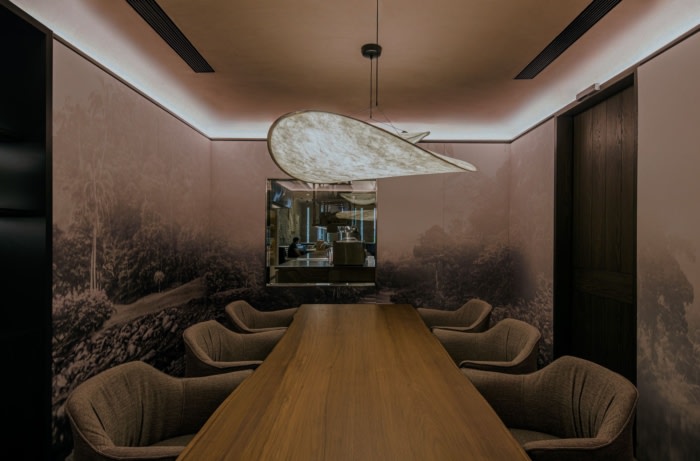Fiz Restaurant
Fiz’s interior design by ONG&ONG combines monastic simplicity with earthy materials, iconic temple motifs, and retro-futuristic nuances, creating an immersive dining journey that intertwines tradition and modernity.
With monastic simplicity, the restaurant’s interior design amplifies the connection between culture, history, and dining experience.
Located in the lively F&B district of Tanjong Pagar, Fiz is a culinary beacon, embodying the rich flavours and architectural legacy of Southeast Asia. Chef-owner Hafizzul Hashim takes diners on a gastronomic journey across Southeast Asia, from the ancient steps of Angkor Wat to the lush highland valleys of Sarawak. But it’s not just the food that gathers attention, here the interior of the restaurant itself harmonises motifs from around Southeast Asia by using earthy materials such as stone, wood, and terracotta.
ONG&ONG were engaged to design the interiors of the restaurant and what the team delivered was a design that harmonizes iconic temple motifs, monastic simplicity, and elements of earth architecture, all punctuated with retro-futuristic nuances. The design elements form a part of Fiz’s narrative, offering an immersive dining journey that intertwines tradition and modernity.
In this fusion of heritage and innovation and monastic simplicity, the interior is dominated by earthy textures and tones, a reflection of monastic simplicity. Honest and natural materials like stone, wood, and terracotta as well as aged bronze and brass accents are incorporated, infusing the space with a subtle opulence and a nod to Southeast Asian temples’ ornate detailing.
The main entrance door is a statement piece, its design an abstract echoing of the intricate textures and motifs found in temples. Crafted as a grand, heavy single-leaf pivot door, it offers diners a commanding and majestic welcome. Once inside and at the heart of Fiz is the main dining area, anchored by a monolith which functions as a central service station. Across the space, circular booths reinforce the circumambulating motion and seats are upholstered in natural tactile fabrics with curves and levels that reflect the contours of Southeast Asia’s terraced landscapes on which rice is cultivated.
Each dining table is made of antique-finished silver travertine and diners can gaze upon the natural lines and variations within the stone that resembles the undulating terrain of the earth. Look up and diners will find a ceiling built as a tribute to the vaulted ceilings of temples, where angled coves and vaults are fascinated into modern, geometric interpretations. In tandem, it is designed for the diner to look upon the table as the earth and to the skies as the divine.
Restaurants can certainly be more than just about feeding oneself. It can be about honouring culture and history, where identity is embellished, and where diners leave with their appetites satiated and their minds enlightened and Fiz ticks all the boxes.














